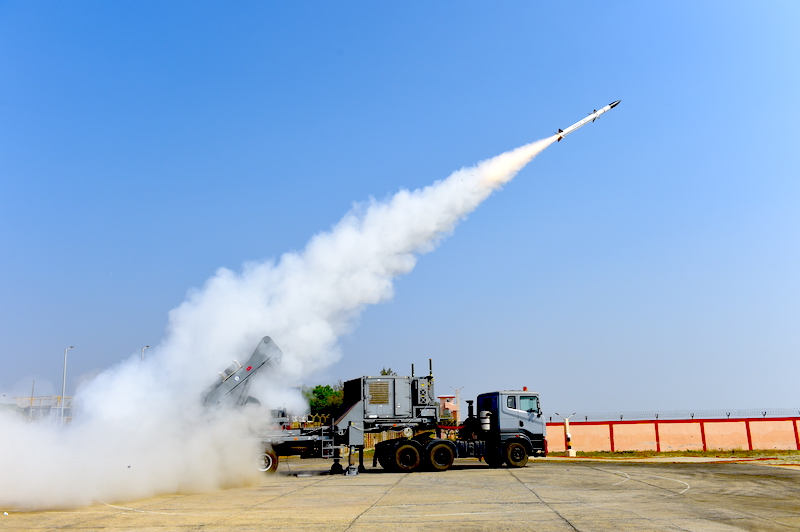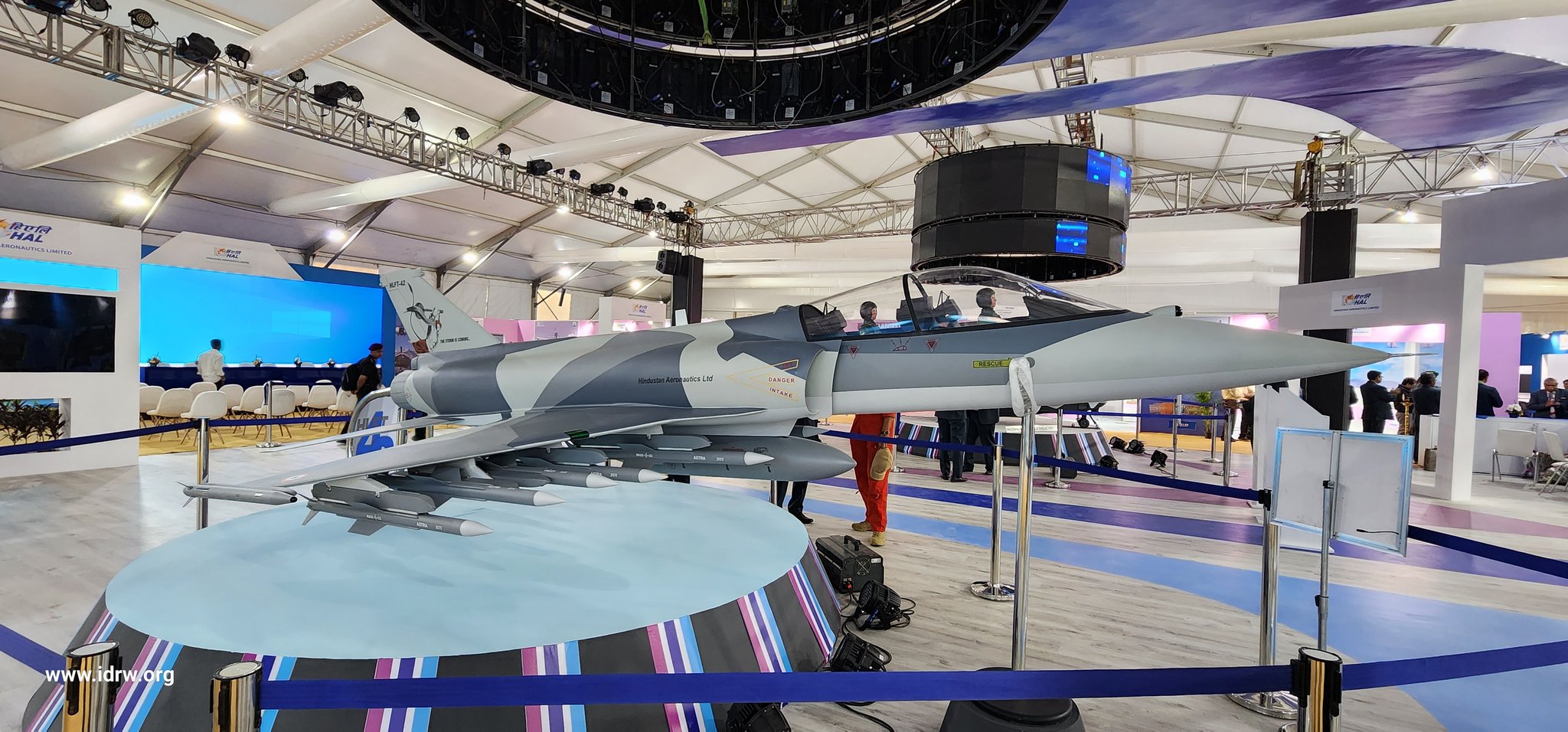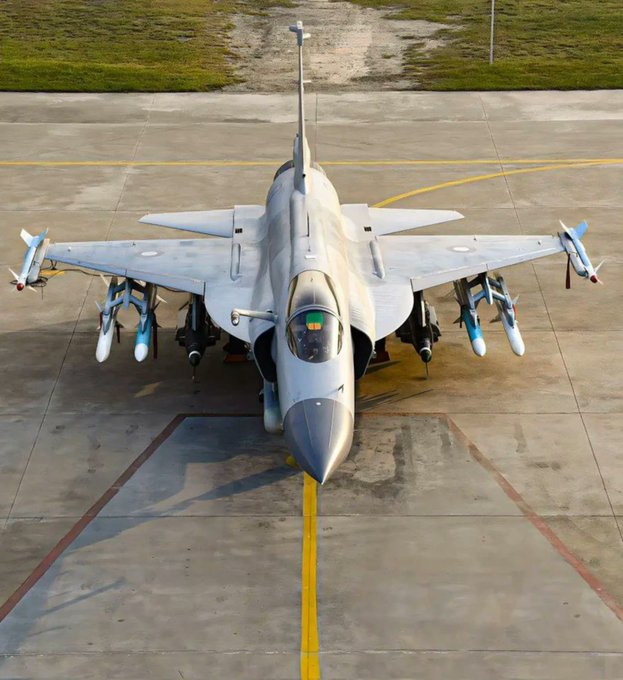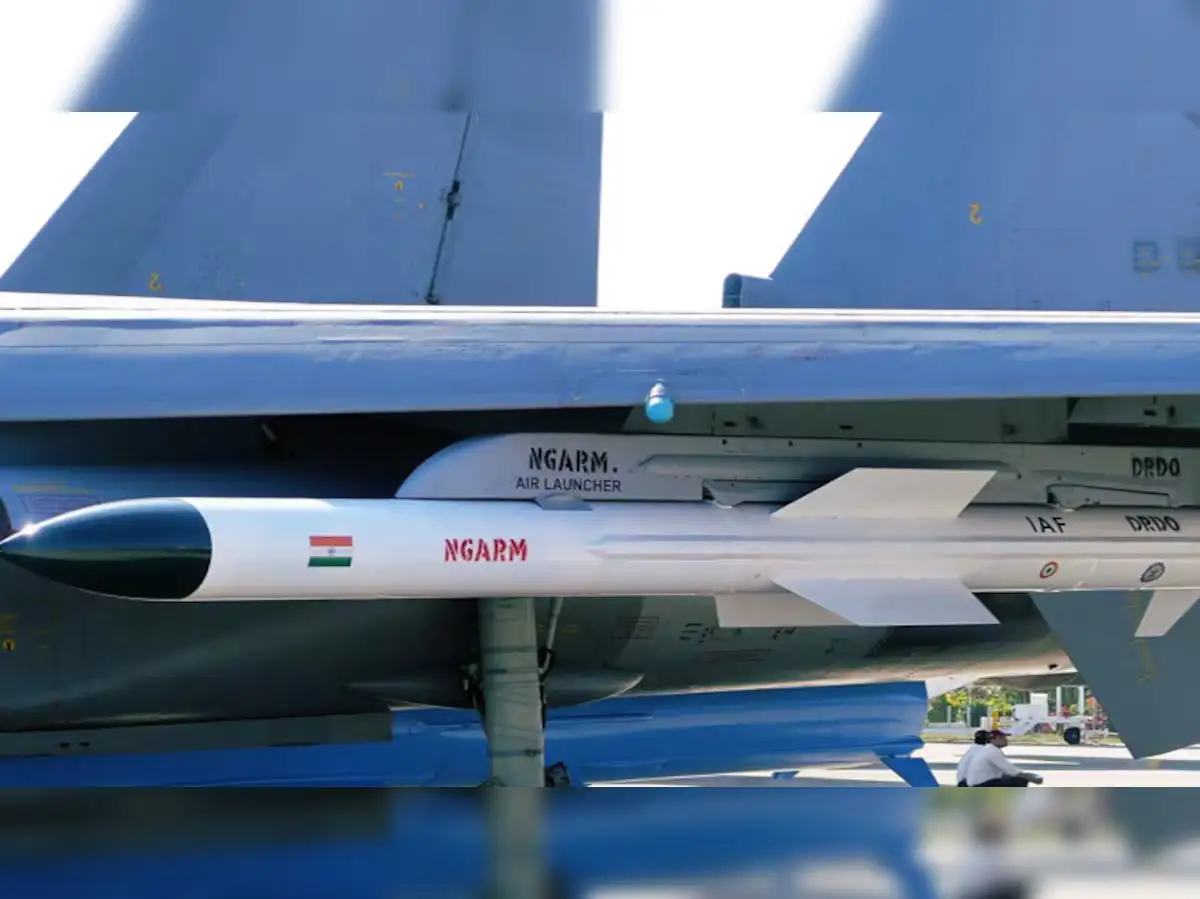News Beat
News Beat reporting is an idrw.org initiative to let our Readers to report News Based on Actual facts but some how has not been reported in Main Stream Media .
SOURCE: RAUNAK KUNDE / NEWS BEAT / IDRW.ORG


In a stunning revelation, retired Pakistan Air Force (PAF) Air Marshal Masood Akhtar has confirmed that PAF’s Bholari Air Base, a critical military installation in Sindh province, was struck by four BrahMos supersonic cruise missiles on May 10, 2025, as part of India’s Operation Sindoor. The precision strikes, which targeted a hangar at the base, resulted in the destruction of a Saab 2000 Erieye Airborne Early Warning and Control System (AWACS) aircraft and caused significant casualties among PAF personnel, marking a severe blow to Pakistan’s air defense capabilities.
Bholari Air Base, located near Hyderabad in Sindh’s Jamshoro district, is a cornerstone of the PAF’s Southern Air Command, housing advanced fighter jets like the F-16A/B Block 15 ADF and JF-17 Thunder, as well as the now-damaged Saab 2000 Erieye AWACS. The base, inaugurated in recent years, is strategically positioned to support rapid deployment and maritime operations, making it a vital asset for Pakistan’s defense architecture.
Continue readingSOURCE: RAUNAK KUNDE / NEWS BEAT / IDRW.ORG


Armenia is deepening its defense ties with India as it prepares to receive the second batch of the Akash-1S air defense missile system after July 2025, following the successful delivery of the first battery in November 2024. This development is part of a $720 million deal signed in 2022 for 15 Akash systems, marking a significant step in Armenia’s efforts to modernize its air defense capabilities amid regional tensions. However, the South Caucasian nation is already looking ahead, expressing keen interest in the next-generation Akash-NG system, which is slated to enter production in 2026, according to sources cited by the Indian Defence Research Wing (idrw.org).
The Akash-1S, an advanced variant of the Akash missile system developed by India’s Defence Research and Development Organisation (DRDO), has already proven its worth for Armenia. Equipped with an indigenous seeker, the Akash-1S enhances hard-kill probability, offering greater precision in engaging aerial threats such as fighter jets, cruise missiles, and drones at ranges up to 30 kilometers. Each battery, manufactured by Bharat Dynamics Limited (BDL) and Bharat Electronics Limited (BEL), includes four launchers with three missiles each and a Rajendra 3D radar, providing robust protection against regional adversaries. Armenia’s acquisition of the system reflects its strategic pivot toward diversifying defense procurement, reducing reliance on traditional suppliers like Russia, which accounted for over 90% of its arms imports between 2011 and 2020.
Continue readingSOURCE: RAUNAK KUNDE / NEWS BEAT / IDRW.ORG


India’s air defense capabilities are set to receive a significant boost as the Indian Air Force (IAF) anticipates the delivery of the fourth regiment of the Russian-made S-400 Triumf air defense system by the fourth quarter of 2025, with the fifth and final regiment scheduled for August 2026. This development, part of a $5.43 billion (?35,000 crore) deal signed with Russia in October 2018 for five regiments, underscores India’s strategic focus on countering aerial threats from Pakistan and China. Despite delays caused by the Russia-Ukraine conflict, the impending deliveries.
The S-400 Triumf, known to NATO as the SA-21 Growler, is a mobile, long-range surface-to-air missile (SAM) system developed by Russia’s Almaz-Antey corporation. Capable of engaging targets at ranges up to 400 km and altitudes of 30 km, the S-400 can intercept fighter jets, ballistic missiles, cruise missiles, and drones, tracking up to 80 targets simultaneously. Each regiment consists of two batteries, with four launchers per battery, supported by multifunction radars like the 91N6E Big Bird and 92N6E Grave Stone, and a 55K6E command module. The system employs four missile types: the 40N6E (400 km range), 48N6E3 (250 km), and shorter-range 9M96E/E2 (40–120 km), offering multi-layered defense against diverse threats.
Continue readingSOURCE: RAUNAK KUNDE / NEWS BEAT / IDRW.ORG


Hindustan Aeronautics Limited (HAL) has officially kicked off the search for a suitable engine to power its ambitious Hindustan Lead-in Fighter Trainer (HLFT-42), a next-generation supersonic trainer designed to prepare pilots for India’s advanced combat aircraft. On March 17, 2025, HAL issued a Request for Information (RFI) to global engine vendors, specifying a thrust requirement of 95-100 kilonewtons (kN) and a total technical life of 6,000 hours.
As the hunt intensifies, the General Electric F414 emerges as the frontrunner, but whispers of HAL’s under-development 110kN engine for the Advanced Medium Combat Aircraft (AMCA) suggest a potential shift toward engine commonality—a move that could redefine the HLFT-42’s role in training future AMCA pilots.
Continue readingSOURCE: RAUNAK KUNDE / NEWS BEAT / IDRW.ORG


In a recent escalation of tensions in the Arabian Sea, the Indian Navy’s deployment of MiG-29K fighter jets armed with two Rampage Air-Launched Ballistic Missiles (ALBMs) has reportedly unnerved the Pakistani military, prompting the Pakistan Air Force (PAF) to deploy F-16 fighter jets to safeguard its strategic Karachi Naval Base and other key assets in the region, according to an official familiar with the development. The Indian Navy’s move, supported by its aircraft carriers INS Vikrant and INS Vikramaditya, underscores its growing maritime dominance and has heightened alertness along Pakistan’s coastline.
The Indian Navy’s MiG-29K, a carrier-based multirole fighter, has recently been integrated with the Rampage air-to-ground missile, a high-speed, long-range weapon developed by Israel. With a strike range of approximately 250 kilometers, the Rampage missile significantly enhances the MiG-29K’s ability to target strategic installations, including naval bases, radar stations, and coastal infrastructure, from a safe distance. The missile’s precision and high-speed low-drag design make it a potent tool for striking high-value targets, as demonstrated by its use by Israel against Iranian military installations.
Continue readingSOURCE: RAUNAK KUNDE / NEWS BEAT / IDRW.ORG


In a significant endorsement of India’s growing defence manufacturing ecosystem, Lockheed Martin, the American aerospace and defence giant, has highlighted the country’s remarkable progress in producing critical components for its C-130J Super Hercules aircraft. According to a recent statement, 96% of the wings for the C-130J, a versatile tactical airlifter used by the Indian Air Force (IAF), are now manufactured in India. This milestone underscores India’s emergence as a key player in global defence supply chains and aligns with the government’s “Make in India” initiative.
The achievement is a result of Lockheed Martin’s collaboration with Tata Advanced Systems Limited (TASL), its Indian partner based in Hyderabad. The Tata-Lockheed Martin Aerostructures Limited (TLMAL) facility has been instrumental in producing complex aerospace components, including the C-130J wings. Since the partnership began, the facility has progressively localized production, reducing reliance on imported components and enhancing India’s self-reliance in defence manufacturing.
Continue readingSOURCE: RAUNAK KUNDE / NEWS BEAT / IDRW.ORG


India has formally requested additional S-400 air defence systems from Russia following the system’s successful deployment during Operation Sindoor, a recent military operation aimed at neutralizing aerial threats from Pakistan. The S-400, known in India as the ‘Sudarshan Chakra’, played a pivotal role in intercepting and destroying incoming missiles and drones, demonstrating its effectiveness in real-world combat scenarios .
The S-400 system, developed by Russia, is one of the most advanced long-range air defence systems globally. It can track targets up to 600 kilometers away and engage them at distances of up to 400 kilometers. The system is capable of firing four different types of missiles, allowing it to engage a variety of aerial threats, including aircraft, drones, cruise missiles, and ballistic missiles .
Continue readingSOURCE: RAUNAK KUNDE / NEWS BEAT / IDRW.ORG


In a powerful display of air superiority, the Indian Air Force (IAF) shot down at least five Pakistan Air Force (PAF) aircraft during Operation Sindoor, a decisive counteroffensive launched in response to the April 22, 2025, Pahalgam terror attack that killed 26 civilians. At a press conference on May 12, Air Marshal AK Bharti, Director General of Air Operations, confirmed that the IAF’s advanced air defense systems (ADS) and fighter jets neutralized several high-tech PAF aircraft, though he refrained from specifying exact numbers.
Sources cited by the Indian Defence Research Wing (idrw.org) revealed that the downed aircraft included one Mirage-5, two JF-17 Thunder jets, one F-16, and an unidentified fifth aircraft. Bharti also hinted at the destruction of a high-value target, widely speculated to be one of Pakistan’s nine Saab 2000 Erieye airborne early warning and control (AEW&C) aircraft, either shot down or damaged in a strike on a hangar at PAF Base Bholari. This article explores the IAF’s aerial triumphs, the role of its anti-drone and air defense systems, and the strategic implications of these losses for Pakistan.
Continue readingSOURCE: RAUNAK KUNDE / NEWS BEAT / IDRW.ORG


The Hellenic Air Force (HAF), Greece’s air arm, is reportedly showing keen interest in India’s Rudram-1 and Rudram-2 series of air-launched anti-radiation missiles (ARMs) for integration with its fleet of Dassault Rafale fighter jets, according to sources cited by idrw.org. Developed by India’s Defence Research and Development Organisation (DRDO), these supersonic and hypersonic missiles are designed for suppression of enemy air defenses (SEAD) and destruction of enemy air defenses (DEAD), targeting radar, communication systems, and bunkers. Concurrently, the Indian Air Force (IAF) is advancing integration of the Rudram-1 with its Rafale and Tejas Mk1A jets, positioning India as a potential supplier of advanced SEAD solutions.
In contrast, European NATO partners, including France and Germany, face gaps in dedicated anti-radar capabilities, relying on the U.S.-made AGM-88 HARM or awaiting the MBDA RJ10 missile, which is not expected until 2035 with the Rafale F5.
Continue readingSOURCE: RAUNAK KUNDE / NEWS BEAT / IDRW.ORG


In a dramatic escalation of tensions between India and Pakistan, the Indian Army released footage on May 12, 2025, purportedly showing the wreckage of a Pakistan Air Force (PAF) Mirage 5 jet shot down during Operation Sindoor. The video, presented during a Director General of Military Operations (DGMO) briefing, was cited as evidence of India’s successful retaliation against Pakistani aggression following a terrorist attack in Kashmir on April 22, 2025, which killed 26 civilians. The footage has sparked intense debate and drawn global attention to the capabilities of both nations’ air forces, with the Mirage 5—a French-designed fighter-bomber capable of nuclear weapons delivery—taking center stage.
The Indian military’s video, widely shared on platforms like X, shows debris scattered across a field, including what appears to be a jet engine, tail fin, and remnants of a weapons. Air Marshal A K Bharti, addressing the briefing, credited India’s indigenous Akash air defense system for downing the Mirage 5, emphasizing that Indian bases remain fully operational with minimal losses.
Continue readingSOURCE: RAUNAK KUNDE / NEWS BEAT / IDRW.ORG


In a significant blow to Pakistan’s air defense capabilities, the Indian Air Force (IAF) has destroyed a Chinese-supplied YLC-8E anti-stealth radar stationed at the Chunian Air Base in central Punjab, identified as a frontline operational station. The radar, developed by the Chinese state-owned China Electronics Technology Group Corporation (CETC) and touted as the “flagship of Chinese stealth radar,” was obliterated during India’s Operation Sindoor, a retaliatory strike launched on May 7, 2025, targeting terrorist infrastructure and military assets in Pakistan.
The YLC-8E, a UHF-band 3D surveillance radar, was donated to Pakistan by China in 2023 from the People’s Liberation Army’s own inventory, reportedly to counter India’s superior ELM-2090U Ultra UHF radars deployed by the IAF. Described by China’s state-owned Global Times as the world’s first UHF-band anti-stealth radar system, the YLC-8E features a massive antenna—equivalent to two badminton courts—and leverages high-power, cutting-edge information processing technology to detect advanced stealth aircraft, including the U.S. F-22 and F-35, at ranges exceeding 500 kilometers. It is also designed to track missile threats up to 700 kilometers, offering high-definition targeting and independent guidance capabilities. The radar’s active phase-controlled array and novel anti-stealth technology were marketed as superior to foreign competitors, positioning it as a backbone of modern air defense networks.
Continue readingSOURCE: RAUNAK KUNDE / NEWS BEAT / IDRW.ORG


India’s Defence Research and Development Organisation (DRDO) displayed its indigenously developed Long Range Land Attack Cruise Missile (LRLACM) at the DEFEA 2025 exhibition in Athens, Greece, drawing significant attention from global defense communities. The subsonic cruise missile, with a strike range of 1,000 km, underscores India’s growing prowess in advanced missile technology and its push toward self-reliance in defense manufacturing.
The LRLACM, a new variant of the Nirbhay missile, was first successfully flight-tested on November 12, 2024, at the Integrated Test Range in Chandipur, Odisha. Developed by the Aeronautical Development Establishment (ADE) in Bengaluru, with contributions from other DRDO labs and Indian industries like Bharat Dynamics Limited and Bharat Electronics Limited, the missile is designed for precision strikes on strategic land targets. Its terrain-hugging flight path and subsonic speed enhance stealth, making it difficult for enemy defenses to detect and intercept.
Continue readingSOURCE: RAUNAK KUNDE / NEWS BEAT / IDRW.ORG


In a strategic move to address its maritime capability gaps, the Indian Navy has initiated government-to-government discussions with the United States and France for the procurement of twin-engine light Naval Utility Helicopters (NUHs). According to sources familiar with the development, the Navy has reached out to the embassies of both nations and engaged with leading manufacturers, including European aerospace giant Airbus, to acquire all-weather, twin-engine NUHs.
The Indian Navy has outlined specific requirements for the helicopters, emphasizing their critical role in enhancing operational flexibility. The NUHs are expected to be in the 5-tonne weight category and equipped with folding blades to enable seamless operations from warships to shore and vice versa. This procurement aligns with the Navy’s long-standing need for 111 such helicopters to strengthen its maritime surveillance, logistics, and search-and-rescue capabilities.
Continue readingSOURCE: RAUNAK KUNDE / NEWS BEAT / IDRW.ORG


In a significant boost to India’s defense manufacturing capabilities, a state-of-the-art production plant for the BrahMos-NG (Next Generation) missile was inaugurated in Lucknow. The facility, designed to produce 150 units of the advanced supersonic cruise missile annually, marks a pivotal step in enhancing the Indian Air Force’s (IAF) precision strike capabilities. The opening comes on the heels of the IAF’s successful deployment of the BrahMos-A missile, which recently delivered devastating precision strikes on Pakistan Air Force (PAF) airbases, showcasing the missile’s formidable power.
The BrahMos-NG, a smaller and lighter variant of its predecessor, weighs just 1.3 tons, making it compatible with all IAF fighter jets, including light combat aircraft. This versatility is expected to significantly expand the IAF’s operational flexibility, enabling a broader range of platforms to carry and deploy the missile. Unlike the heavier BrahMos-A, which is primarily deployed by larger aircraft like the Su-30 MKI, the BrahMos-NG’s compact design ensures it can be integrated across the IAF’s diverse fleet.
Continue readingSOURCE: RAUNAK KUNDE / NEWS BEAT / IDRW.ORG


As the India-Pakistan conflict intensifies, unconfirmed reports suggest that India may be fast-tracking the integration of upgraded intelligence systems, stand-off weapons, and Software Defined Radios (SDRs) onto its Tejas Mk1 Initial Operational Capability (IOC) and Full Operational Capability (FOC) variants. This development, driven by the ongoing clashes with Pakistan, aims to bolster the Indian Air Force’s (IAF) operational capabilities amid a rapidly evolving battlefield scenario.
The IAF currently operates 31 Tejas Mk1 aircraft, comprising 16 IOC and 15 FOC variants, inducted into the No. 45 Squadron (“Flying Daggers”) and No. 18 Squadron (“Flying Bullets”) at Sulur Air Force Station. The Tejas Mk1, a lightweight, single-engine, multirole fighter developed by the Aeronautical Development Agency (ADA) and Hindustan Aeronautics Limited (HAL), has been a cornerstone of India’s push for self-reliance in defense manufacturing.
Continue reading